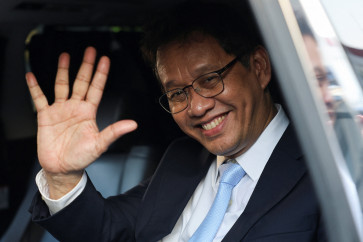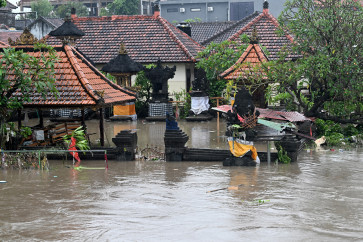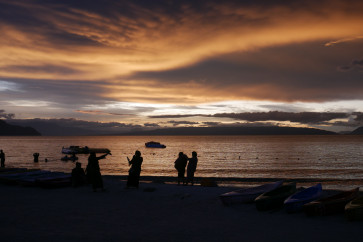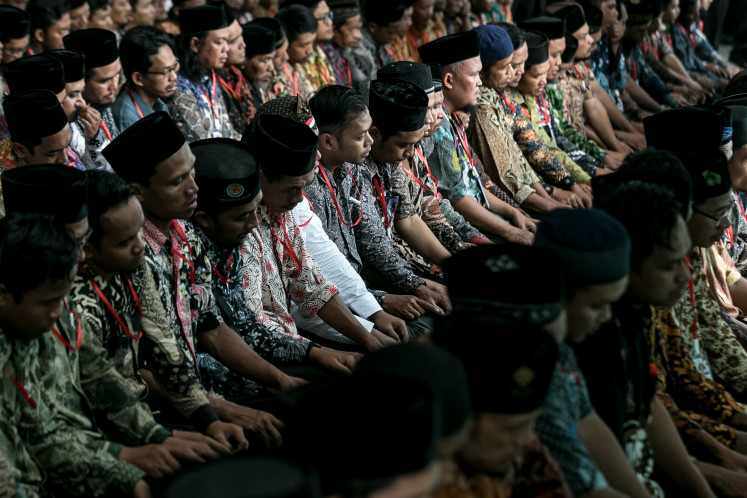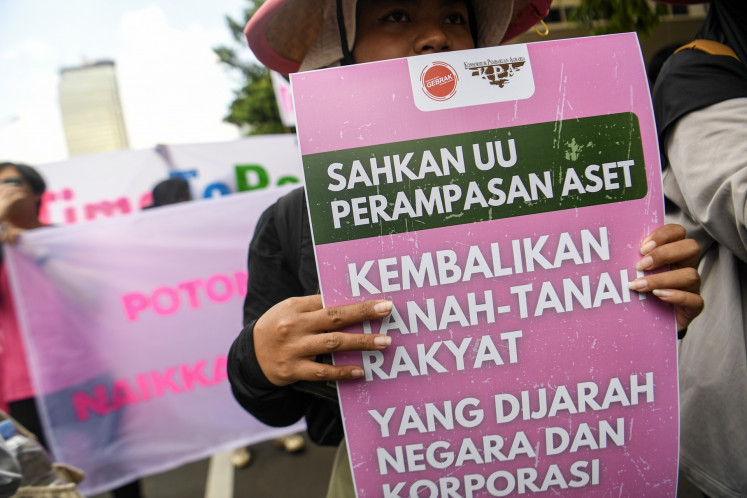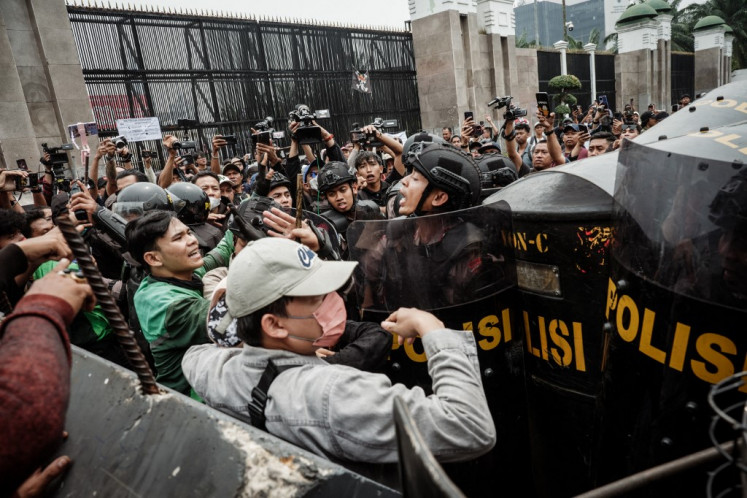Popular Reads
Top Results
Can't find what you're looking for?
View all search resultsPopular Reads
Top Results
Can't find what you're looking for?
View all search resultsIs multipolarism replacing containment of China?
Change text size
Gift Premium Articles
to Anyone
A
sia has been grappling with a changing strategic environment, and countries big and small in the region, as well as outsiders with vital interests, including the United States, are struggling to find their footing in this still largely uncertain world.
The rise of China and the relative decline of the US’ role in this region have put the two countries on a collision course. The growing tension between them, over issues such as trade and maritime access in the South China Sea, is forcing countries in the region into joining one of the two blocs in this 21st century version of the Cold War.
For much of the last two decades, containment was the buzzword in Washington and many Asian capitals as they warily watched China building its power economically, politically and militarily. Although the US has seen its power and influence in Asia waning, its traditional allies and many friends are aligning themselves with it, further reinforcing the trend toward a bipolar Asia.
But containing China should not be the only game in town, for it would put Asia right at the center of this emerging cold war. Lest we forget, four Asian countries have nuclear weapons.
Multipolarism, or the idea that the region is ruled or managed not by one or two powers, but several of them working in concert, offers an alternative proposition without antagonizing the big powers.
While multipolarity is the desired outcome, bipolarity is what we are likely to get, given the growing China-US rivalry.
There is the possibility of a “uni-multipolar” Asia, where a single power, meaning China, reigns but does not control the region, similar to the post-Cold War US, which controlled much of but not the entire world.
India is pushing for multipolarism given its position as Asia’s second-biggest power. If power is measured by economic strength, India ranks fifth in the world. Independent predictions say China will replace the US as the largest economy before 2030, with India tailing second.
India has aspirations to be a major power and wants to project itself as leading South Asia. However, it has seen its influence undermined by the building of ports in neighboring Bangladesh, Sri Lanka and Pakistan with large Chinese investments. These ports give China access in the Indian Ocean, strategic to its economy and national security,
India may have the military might to claim itself as an emerging power, but unlike China, it lacks the ability to dispense loans and aid. Sri Lanka turned to China to build the Hambantota deep-sea port after India said it did not have the US$1 billion needed to build it. China had no problem with money and now has full control over the port’s operation for the next 99 years.
In Indonesia, multipolarism is not in its foreign policy lexicon, but as an aspiring middle power, it will find the concept appealing as it struggles to place itself between the two competing powers without being seen as aligning with either of them. It is back to the “rowing between two coral reefs” all over again as it did during the height of the Cold War. Today, it is in a much better position to keep its distance between the two powers. Indonesia is rising in world’s economic rankings, currently 16th-largest (seventh in purchasing power parity terms); it will become the fourth-largest economy by 2030, according to a Standard Chartered report.
Most Asian countries count on China as their biggest trading partner but they rely on the US for security arrangements. But this is changing.
Some initiatives appear to be clearly aimed at containing China.
The Comprehensive and Progressive Trans Pacific Partnership, which took effect in December, involves 11 countries led by Japan but not the US after President Donald Trump pulled out of the deal.
Most of the initial concepts for an Indo-Pacific security architecture addressed concerns about the rise of China. India, which is promoting its own Indo-Pacific concept, is part of the Quad security alliance with the US, Australia and Japan. Since Quad’s membership is based on shared values, it automatically excludes China.
Asia needs a new security arrangement that takes into account the evolving geopolitical and geo-economic environments. The days of the US as the sole underwriter for the security umbrella in Asia are over. A new one must emerge that takes into account not only the rise of China, but also other Asian countries, mainly India and Indonesia, as well as the role of the US.
A multipolar Asia is in the interests of all countries in the region, and also the US, which will continue to play a role in providing security in the region, but far less than it had done in the past.
Multipolarism is less confrontational than the old game of containment. The question is how soon it will gain traction before everyone sits down and discuss Asia’s future for the benefit of its people.
***
The author, a staff writer with The Jakarta Post, participated in the 20th Asian Security Conference in New Delhi on March 26 to 28 organized by the Institute for Defense Studies and Analysis.



